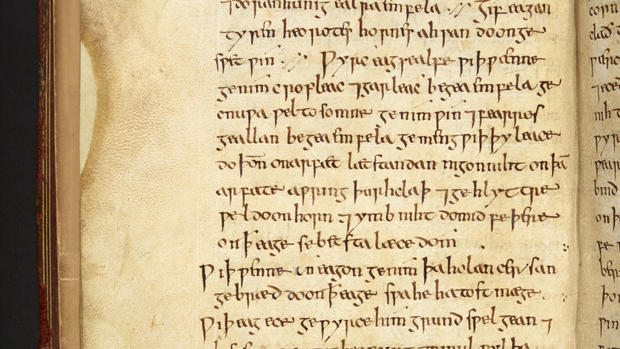Medieval garlic and bile potion kills MRSA superbug
Could a 1,000-year-old concoction be the answer to stopping superbugs?
Christina Lee, an Anglo-Saxon expert at the University of Nottingham, found the recipe for a remedy for eye infections in a 10th Century medical volume called Bald's Leechbook, one of the earliest known medical textbooks. The instructions were clear -- clear enough to follow today -- so she brought it to a microbiology lab at the university to see if it really works against bacteria.
In its original Old English, the recipe -- which may date back even further, to the 9th Century -- called for two species of Allium (garlic and onion or leek), wine and bile from a cow's stomach. The topical potion was brewed in a brass vessel, strained and left to sit for nine days.
The ingredients on their own are known to have antibacterial properties, so it seemed like a good bet.
"We thought that Bald's eyesalve might show a small amount of antibiotic activity, because each of the ingredients has been shown by other researchers to have some effect on bacteria in the lab," said microbiologist Freya Harrison. "Copper and bile salts can kill bacteria, and the garlic family of plants make chemicals that interfere with the bacteria's ability to damage infected tissues."
When they performed their tests, they "were absolutely blown away by just how effective the combination of ingredients was."
They used fresh ingredients according to the original instructions and exposed populations of Staphylococcus aureaus, the antibiotic-resistant bacteria MRSA, to the potion both in lab cultures and on infected wounds in mice. It obliterated the MRSA, killing 999 out of 1,000 bacterial cells.
"We were genuinely astonished at the results of our experiments in the lab. We believe modern research into disease can benefit from past responses and knowledge, which is largely contained in non-scientific writings," said Lee, adding that remedies like this one "were developed well before the modern understanding of germ theory."
Steve Diggle of the microbiology lab pointed out that this was also before the invention of the scientific method of carefully planned experimentation.
"When we built this recipe in the lab I didn't really expect it to actually do anything," he said. "When we found that it could actually disrupt and kill cells in S. aureus biofilms, I was genuinely amazed. Biofilms are naturally antibiotic resistant and difficult to treat so this was a great result."
Antibiotic resistance is a growing problem around the world. Repeated exposure to antibiotics can lead germs to develop resistance to the drugs, making these life-saving treatments no longer effective. The Centers for Disease Control and Prevention estimates that drug-resistant bacteria cause 23,000 deaths and 2 million illnesses each year in the United States alone.
MRSA -- methicillin-resistant Staphylococcus aureus -- is a major problem in hospitals, where it can lead to life-threatening pneumonia and bloodstream infections. There were two superbug outbreaks at Los Angeles hospitals this year, linked to a medical device called a duodenoscope. New research finds the superbug is now taking up residence in American homes.
Last week, the White House announced a five-year plan to fight the danger posed by antibiotic-resistant bacteria.
"The rise of antibiotic resistance in pathogenic bacteria and the lack of new antimicrobials in the developmental pipeline are key challenges for human health," said Harrison. "There is a pressing need to develop new strategies against pathogens because the cost of developing new antibiotics is high and eventual resistance is likely."
The multidisciplinary "AncientBiotics" team will present their findings this week at the annual meeting of the Society for General Microbiology. They plan to keep exploring the future potential of potions from the past.

